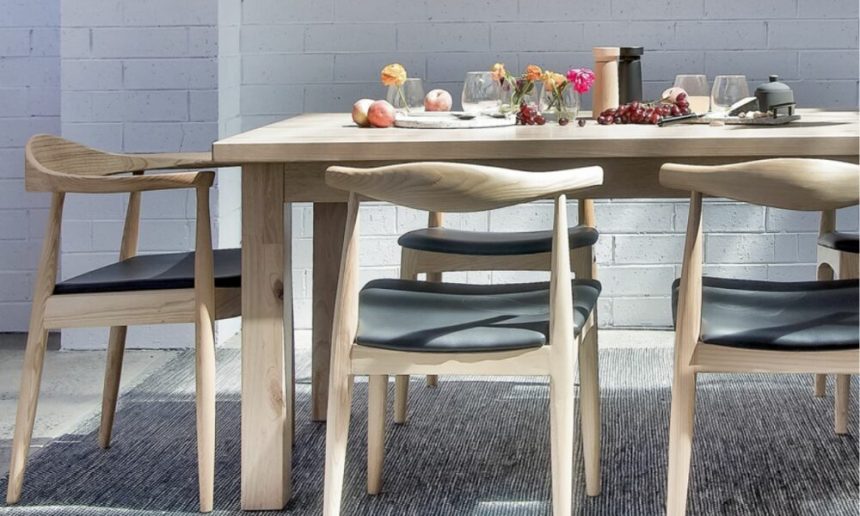A restaurant’s ambiance greatly influences how its patrons eat there. Restaurant owners know how much of an impact the right furniture arrangement can have on attracting and retaining customers. It requires more than just providing seating for patrons; it also entails creating an ambiance that elevates the cuisine, the brand, and the whole dining experience.
IMPORTANCE OF RESTAURANT FURNITURE
Restaurant furniture selections have a big influence on patrons’ comfort and convenience
That means it’s more than just appearances. The furniture at a restaurant sets the tone for the type of patron it hopes to attract. For instance, upscale fine dining establishments would select luxurious, upholstered chairs, whereas a small café might prefer more casual wooden chairs.
FACTORS INFLUENCING FURNITURE SELECTIONS
The furniture that is chosen for restaurants is influenced by many factors. These factors include the restaurant’s idea, the target customer base, the available space, maintenance, and, of course, budgetary constraints. Fast-food restaurants prioritise cheap, easily cleaned furniture, whereas fine dining establishments may spend more on robust, high-quality furniture to match their upscale decor.
TYPES OF RESTAURANT FURNITURE
- CHAIR AND SEATING
From traditional wooden chairs to contemporary metal or plastic ones, chairs come in a variety of styles and materials.Booth seating is a popular choice for diners and family restaurants due to its comfort and seclusion.
- TABLES Tables differ in material, size, and form. Tables can be square, rectangular, or round to accommodate varying eating situations and party sizes. While certain restaurants prefer glass or metal tabletops, others may choose marble or wooden tabletops.
- BAR STOOL AND COUNTER
In pubs, bars, and informal dining establishments that emphasize alcohol, bar chairs and countertops are typical.
- OUTDOOR FURNITURE
Weather-resistant and sturdy furniture, often crafted from materials like rattan, aluminum, or teak, is essential for restaurants featuring outside seating.
DESIGN AND LAYOUT CONSIDERATION
A restaurant’s furniture arrangement is quite important. It should make moving around easier for employees and clients alike. A pleasant eating experience mainly depends on elements like the flow of the dining room, accessibility, and the distance between tables.
CREATING AMBIENCE THROUGH FURNITURE SETTING
A restaurant’s furnishings have a significant impact on the atmosphere there. For example: Comfortable, padded chairs may provide a calm environment, perfect for lengthy, unhurried meals. For fast dinners or social events, a more lively and informal atmosphere might be created with high bar stools and tables.
CHOOSING FURNITURE TO REFLECT THE BRAND IDENTITY
The brand identity of the restaurant should be reflected in the furniture arrangement. For example, a restaurant with a rustic theme would use furniture that has been damaged to give a homely, old feel. Similarly, a sleek, modern restaurant may use furniture that reflects its brand identity.
CHALLENGES AND TRENDS IN RESTAURANT FURNITURE
Keeping up with changing trends, guaranteeing comfort without sacrificing style, and striking a balance between durability and aesthetics are all difficulties in the restaurant furniture environment. A more significant number of people are choosing eco-friendly and sustainable furniture solutions as environmental awareness grows.
MAINTENANCE AND LONGEVITY
Restaurant furniture is used extensively and has to be maintained frequently to last a long time. Selecting long-lasting materials that are simple to clean and support is crucial for both the longevity of the furniture and the general hygiene of the space.
CONCLUSION
In conclusion, a restaurant’s furniture placement is critical in designing a cozy and welcoming dining area. It’s about creating an experience rather than just offering a place to sit. The choice and placement of furniture dramatically influence the feel, comfort, and overall eating experience of patrons. Restaurant owners have a lot of elements to think about when designing a space that reflects their corporate identity and makes their customers’ experience pleasurable. These factors range from furniture style to layout and upkeep.








